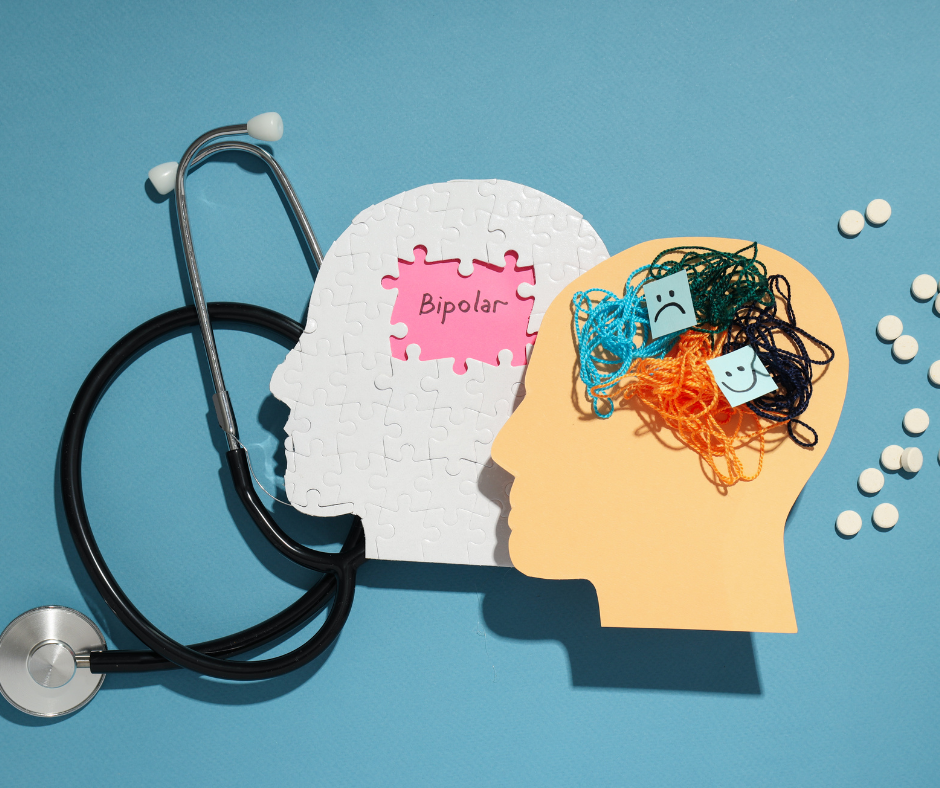
Have you ever wondered about the complexities of mood disorders? From the persistent gloom of dysthymia to the emotional rollercoaster of bipolar disorder, these conditions can have a profound impact on individuals’ lives. In this article, we will explore the intricacies of mood disorders, shedding light on their symptoms, diagnostic criteria, and available treatment options.
Whether you or someone you know has been affected by these conditions, this article aims to provide a better understanding of mood disorders and the importance of seeking help and support. So, let’s embark on this enlightening journey of decoding mood disorders together.
Understanding Mood Disorders
Mood disorders are a common and often misunderstood group of mental health conditions that can greatly impact your daily life and overall well-being. They involve a disturbance in mood, leading to emotional highs or lows that are persistent and interfere with your ability to function. In this comprehensive article, we will delve into the various types of mood disorders, their symptoms, causes, diagnosis, and treatment options to help you better understand and navigate these conditions.
What Are Mood Disorders?
Mood disorders, also known as affective disorders, are a category of mental health conditions characterized by significant changes in mood, emotion, and energy levels. These disorders can affect anyone, regardless of age, gender, or socioeconomic status. Some of the most common mood disorders include dysthymia, major depressive disorder, and bipolar disorder.
Prevalence of Mood Disorders
Mood disorders are more prevalent than you might think, affecting millions of people worldwide. According to the World Health Organization (WHO), depression alone affects over 264 million people globally. Additionally, bipolar disorder has a lifetime prevalence rate of approximately 2.4%, while dysthymia affects around 1-6% of the population. It is important to recognize that these disorders are not a reflection of personal weakness or laziness, but rather complex conditions influenced by various factors.

Types of Mood Disorders
Mood disorders can manifest in different ways, each with its own set of symptoms and characteristics. Understanding the differences between these disorders is crucial for accurate diagnosis and appropriate treatment. Let’s explore some of the most common mood disorders in detail.
Dysthymia
Dysthymia, also known as persistent depressive disorder, is a chronic and long-lasting form of depression. People with dysthymia experience a consistently low mood, feelings of hopelessness, and a general lack of interest in activities. While the symptoms may not be as severe as in major depressive disorder, they tend to persist for at least two years, significantly impacting daily life.
Major Depressive Disorder
Major depressive disorder, commonly referred to as depression, is a mood disorder characterized by persistent feelings of sadness, hopelessness, and a loss of interest or pleasure in once-enjoyed activities. Symptoms of depression can vary in intensity but often interfere with daily functioning and quality of life.
Bipolar Disorder
Bipolar disorder is a complex mood disorder characterized by recurring episodes of mood swings between extreme highs (mania or hypomania) and lows (depression). Individuals with bipolar disorder may experience periods of elevated mood, increased energy, impulsivity, and decreased need for sleep during manic episodes. These episodes can be followed by depressive episodes marked by feelings of sadness, lethargy, and a lack of motivation.
Dysthymia: Definition and Symptoms
Dysthymia is a chronic form of depression that lasts for at least two years. Individuals with dysthymia often experience a persistent low mood, feelings of hopelessness, sleep disturbances, changes in appetite, fatigue, and a diminished interest in activities they once enjoyed. These symptoms are generally less severe compared to major depressive disorder but still significantly impact daily functioning.
Causes and Risk Factors of Dysthymia
The exact cause of dysthymia is not fully understood, but it is believed to be a combination of genetic, biological, and environmental factors. Individuals with a family history of mood disorders are more likely to develop dysthymia. Additionally, certain personality traits, such as being highly self-critical or having low self-esteem, can increase the risk. Chronic stress, trauma, or abuse may also contribute to the development of dysthymia.
Diagnosis and Treatment of Dysthymia
To diagnose dysthymia, a healthcare professional will assess your symptoms, medical history, and conduct a psychological evaluation. The symptoms must be present for at least two years (or one year in children and adolescents) to meet the diagnostic criteria. Treatment for dysthymia often includes a combination of psychotherapy, medication, and lifestyle changes. Cognitive-behavioral therapy (CBT) and interpersonal therapy have been found to be particularly effective in managing dysthymia.
Major Depressive Disorder: Definition and Symptoms
Major depressive disorder, commonly known as depression, is a mood disorder characterized by frequent and persistent feelings of sadness, hopelessness, and a loss of interest in activities. Other symptoms may include changes in appetite and sleep patterns, fatigue, difficulty concentrating, feelings of guilt or worthlessness, and thoughts of death or suicide. These symptoms can significantly disrupt your ability to function and negatively impact your overall well-being.
Causes and Risk Factors of Major Depressive Disorder
The exact cause of major depressive disorder is not fully understood, but researchers believe it is a complex interplay of genetic, biological, and environmental factors. A family history of depression, imbalances in brain chemicals called neurotransmitters, and certain life events, such as trauma, loss, or significant stress, can increase the risk of developing depression. Additionally, certain medical conditions, such as thyroid disorders or chronic pain, may also contribute to the development of depression.
Diagnosis and Treatment of Major Depressive Disorder
Diagnosing major depressive disorder involves a comprehensive evaluation by a healthcare professional. They will assess your symptoms, medical history, and perform a physical examination to rule out any underlying medical conditions. Treatment for major depressive disorder often involves a combination of psychotherapy, medication, and lifestyle changes. Antidepressant medications, such as selective serotonin reuptake inhibitors (SSRIs) or serotonin-norepinephrine reuptake inhibitors (SNRIs), are commonly prescribed to help manage symptoms.
Bipolar Disorder: Definition and Symptoms
Bipolar disorder is a complex mood disorder characterized by episodes of mania or hypomania and depressive episodes. Manic episodes are marked by an elevated mood, increased energy, reckless behavior, racing thoughts, and a decreased need for sleep. Hypomanic episodes are similar to manic episodes but less severe. Depressive episodes involve persistent feelings of sadness, hopelessness, low energy, and a loss of interest in activities. These extreme mood swings can significantly disrupt work, relationships, and daily functioning.

Types of Bipolar Disorder
There are various subtypes of bipolar disorder, including bipolar I, bipolar II, and cyclothymic disorder. Bipolar I disorder involves manic episodes lasting at least seven days, often requiring hospitalization. Bipolar II disorder features hypomanic episodes and depressive episodes but no manic episodes. Cyclothymic disorder is characterized by numerous periods of hypomanic and depressive symptoms that are less severe and shorter in duration than those seen in bipolar I and II.
Causes and Risk Factors of Bipolar Disorder
The exact cause of bipolar disorder is not known, but it is likely a combination of genetic, biological, and environmental factors. Having a family history of bipolar disorder increases the risk, indicating a genetic component. Imbalances in neurotransmitters, such as dopamine and serotonin, may also play a role. Additionally, certain life events, significant stress, substance abuse, and exposure to certain medications may trigger bipolar episodes in individuals already predisposed to the condition.
Diagnosis and Treatment of Bipolar Disorder
Diagnosing bipolar disorder can be challenging due to the diverse nature of its symptoms. Healthcare professionals will perform a thorough assessment, including a detailed psychiatric history, review of symptoms, and mood tracking over time. Treatment for bipolar disorder often involves a combination of medication, psychotherapy, and lifestyle changes. Mood stabilizers, such as lithium or certain anticonvulsant medications, are commonly prescribed to help regulate mood swings.
Other Mood Disorders
In addition to dysthymia, major depressive disorder, and bipolar disorder, there are several other mood disorders worth mentioning.
Cyclothymic Disorder
Cyclothymic disorder is a milder form of bipolar disorder characterized by chronic mood swings between hypomanic and depressive symptoms. These mood swings are less extreme than those seen in bipolar I and II disorders, but they can still significantly impact daily life.
Seasonal Affective Disorder (SAD)
Seasonal affective disorder, often referred to as SAD, is a type of depression that typically occurs during the winter months when there is less natural sunlight. Symptoms may include fatigue, increased sleep, weight gain, social withdrawal, and a persistent low mood. Light therapy, psychotherapy, and medication may be used to alleviate the symptoms of SAD.
Postpartum Depression
Postpartum depression is a mood disorder that affects some women after childbirth. It is characterized by feelings of overwhelming sadness, fatigue, difficulty bonding with the baby, and thoughts of self-harm. Hormonal changes, sleep deprivation, and emotional stressors can contribute to the development of postpartum depression. Treatment may involve a combination of therapy, support groups, and medication.

Differentiating Between Mood Disorders
Differentiating between various mood disorders can be challenging due to overlapping symptoms. Here are some key distinctions to consider:
Depression Versus Bipolar Disorder
While depression and bipolar disorder both involve periods of low mood, the distinguishing factor lies in the presence of manic or hypomanic episodes in bipolar disorder. Depression is characterized by persistent sadness without the presence of mania or hypomania.
Dysthymia Versus Major Depressive Disorder
Dysthymia is a chronic, less severe form of depression that lasts for an extended period, typically two years or more. Major depressive disorder, on the other hand, involves more severe symptoms that significantly impact daily functioning.
Bipolar I Versus Bipolar II
Bipolar I involves manic episodes that are often more severe and longer-lasting, while bipolar II involves hypomanic episodes and depressive episodes but no full-blown manic episodes. The intensity and duration of manic episodes help differentiate between these two subtypes.
Biological Mechanisms
Several biological mechanisms have been implicated in the development of mood disorders. While the exact mechanisms are not fully understood, research suggests the involvement of genetic and hormonal factors, as well as imbalances in neurotransmitters.
Genetics and Family History
There is a strong genetic component to mood disorders, with studies showing that individuals with a family history of these disorders are at a higher risk of developing them. Researchers are actively studying specific genes and variations that may contribute to susceptibility.
Neurotransmitter Imbalance
Imbalances in brain chemicals called neurotransmitters, such as serotonin, dopamine, and norepinephrine, play a role in mood regulation. These imbalances can contribute to mood disturbances seen in mood disorders.
Hormonal Factors
Hormonal changes, such as those experienced during puberty, pregnancy, and menopause, may influence the development of mood disorders. The fluctuation in hormone levels can impact neurotransmitter function and potentially contribute to mood dysregulation.

Psychological Factors
Psychological factors also play a significant role in the development and maintenance of mood disorders. While they do not cause mood disorders directly, they can contribute to their onset and exacerbation.
Trauma and Stress
Experiencing trauma or significant life stressors, such as the loss of a loved one or a traumatic event, can increase the risk of developing a mood disorder. Traumatic experiences can disrupt neurobiological processes and lead to long-lasting changes in mood regulation.
Personality Traits
Certain personality traits, such as being highly self-critical, having low self-esteem, or being prone to negative thinking, can increase the vulnerability to mood disorders. Additionally, individuals with perfectionistic tendencies or high levels of neuroticism may be more prone to developing these conditions.
Cognitive Biases
Cognitive biases are patterns of thinking that influence how we interpret and perceive the world around us. Negative cognitive biases, such as always expecting the worst outcome or viewing oneself in a critical light, can contribute to the development and maintenance of mood disorders.
Environmental Influences
Environmental factors, such as life events and social support, can greatly impact the development and course of mood disorders.
Life Events and Loss
Experiencing significant life events, such as the loss of a job, a divorce, or financial difficulties, can trigger or worsen mood disorders. The stress and emotional toll of such events can overload coping mechanisms and contribute to the development of mood symptoms.
Drug and Alcohol Abuse
Substance abuse, including alcohol and drug abuse, can contribute to the onset and exacerbation of mood disorders. Substance use can alter brain chemistry, exacerbate symptoms, and hinder treatment effectiveness.
Social Support
Having a strong support system and access to social support networks can help protect against the development of mood disorders. Conversely, a lack of social support or experiencing social isolation can increase the risk and worsen outcomes for individuals with mood disorders.
Treatment Options
Fortunately, there are several effective treatment options available for mood disorders. Treatment approaches may vary depending on the specific disorder and individual needs.
Psychotherapy
Psychotherapy, also known as talk therapy, is a common treatment for mood disorders. Cognitive-behavioral therapy (CBT) is particularly effective in helping individuals recognize and challenge negative thought patterns, develop healthier coping strategies, and improve overall mood and well-being. Other therapeutic approaches, such as interpersonal therapy and psychodynamic therapy, may also be used.
Medication
Medication is commonly prescribed to manage mood disorders. Antidepressants, such as selective serotonin reuptake inhibitors (SSRIs) or serotonin-norepinephrine reuptake inhibitors (SNRIs), are often used to treat depression and certain anxiety disorders. Mood stabilizers, such as lithium or anticonvulsant medications, are effective in managing bipolar disorder.
Lifestyle Changes
Adopting specific lifestyle changes can complement other treatment approaches and improve overall well-being. Regular exercise, a balanced diet, adequate sleep, stress management techniques, and avoiding alcohol and drug use can have a positive impact on mood and help alleviate symptoms.

Alternative Therapies
In addition to traditional treatment approaches, some individuals may find alternative therapies helpful in managing their mood disorders. These can include practices such as yoga, meditation, acupuncture, and herbal supplements. However, it is important to discuss these options with a healthcare professional to ensure their safety and effectiveness.
In conclusion, mood disorders are complex conditions that can significantly impact your daily life and overall well-being. Understanding the different types of mood disorders, their symptoms, causes, and treatment options is essential in managing these conditions effectively. If you or someone you know is struggling with a mood disorder, reach out to a healthcare professional for support and guidance. Remember, there is hope, and with the right treatment and support, it is possible to lead a fulfilling and balanced life.




